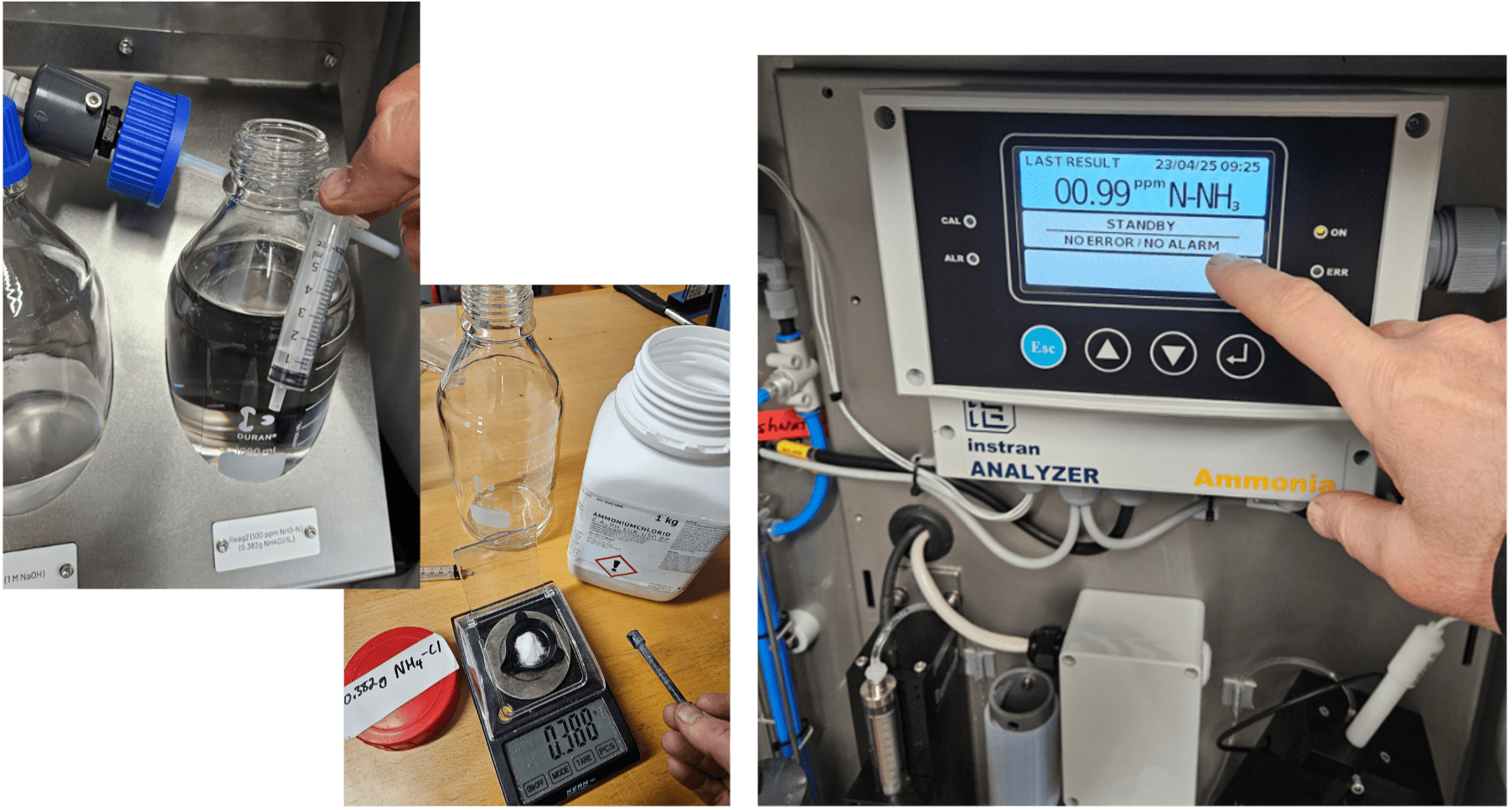
At Blue-Unit, we have extensive experience in delivering ammonia analyzers. Over time, we have perfected the methods to ensure high accuracy. For our wastewater treatment customers, where we calibrate the ion-selective electrode at around 50-100 mg/L ammonia concentration, achieving accuracy is straightforward. However, for our fish farm customers, where calibration is at 1 mg/L, greater precision is required.
Our analyzer employs the Standard Known Addition (SKA) of Ammonium Chloride, which ensures the ion-selective electrode remains accurate across various water qualities, from dirty saltwater to clean freshwater. The SKA for wastewater treatment is measured in grams per liter, while for an electrode calibrated at 1 mg/L, it is as low as 0.382 grams per liter, necessitating precise weight measurement. Currently, we use a gold weight, but this is at the edge of acceptable precision.
Part of the calibration process involves producing a standard ammonia concentration. We extract a volume from the SKA and dilute it to 1 liter with distilled water. While we currently use syringes, we find this method to be at the limit of required precision, so we will switch to pipettes.
The analyzer uses clean freshwater for rinsing between analyses. Direct use of tap water can lead to inaccuracies; for instance, tap water at our facility resulted in a 20% error. However, the same tap water processed through a reverse osmosis unit provides highly accurate measurements.
For example, the Blue-Unit analyzer calibrated at 1 mg/L measured 0.99 mg/L in subsequent analyses. This accuracy, combined with small adjustments like adding a few drops of acid to the SKA for extended storage life, can yield excellent results for an entire month before the next calibration is needed.